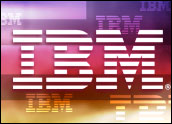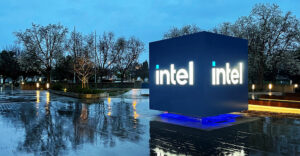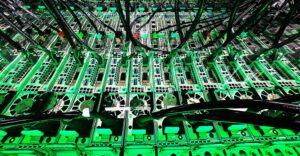
IBM last week announced thatLawrence Livermore National Laboratory has purchased its TrueNorth processor-based cognitive computing platform.
The purchase included an end-to-end ecosystem and a multisocket host node.
The lab will build a supercomputer based on the platform to see how neural networks might be used in the U.S. National Nuclear Security Administration’s cybersecurity program.
The NNSA’s Advanced Simulation and Computing Program, a cornerstone of the Stockpile Stewardship Program to ensure the safety, security and reliability of the nation’s nuclear deterrent without underground testing, will evaluate machine learning applications, evaluate deep learning algorithms and architectures, and conduct general computing feasibility studies using the supercomputer.
Lawrence Livermore was set to take delivery of the 16-chip TrueNorth board last week, Dharmendra S. Modha, chief scientist for brain-inspired computing at IBM Research, told TechNewsWorld.
What’s on Board
The TrueNorth NS16e board integrates 16 TrueNorth processors in a four-by-four array. It will process the equivalent of 16 million neurons and 4 billion synapses, IBM said.
In comparison, the human brain has 100 billion neurons and 1 quadrillion synapses.
The TrueNorth processors can implement large-scale neural models of up to 16 million neurons each for various applications. Each processor has4,092 usable cores consisting of 256 neurons, 256 axons and 65,536 synapses.
The NS16e board consumes 2.5 watts of power — as much as a tablet, IBM said.
Building it required new circuit boards, FPGA programmable logic, system software, placement optimizers, neural network development tools and training algorithms.
IBM plans to build scaled-up versions of the NS16e that will run much larger neural networks using a fraction of the energy consumed by CPUs and GPUs.
Package Deal
The end-to-end ecosystem Lawrence Livermore got from IBM consists of a simulator, a programming language, an integrated programming environment, a library of algorithms, applications, firmware, tools for composing neural networks for deep learning, a teaching curriculum and cloud enablement.
IBM has developed a low-level programming environment that’s a combination of Matlab, Caffe and IBM-specific tools that lets programmers develop TrueNorth primitives, said Brian Van Essen, a computer scientist at Lawrence Livermore. Caffe is one of the tools to be used for training neural networks.
The company has built an integrated software ecosystem around a stack of end-to-end TrueNorth development tools and bundled those into a developer kit for release to partners.
IBM also will deliver a multisocket host node that includes multiple GPUs for training neural networks that will be mapped onto TrueNorth, Van Essen told TechNewsWorld.
GPUs increasingly are being used in artificial intelligence applications because they enable parallel processing, which works well for the most demanding computational problems.
Problem-Solver
Lawrence Livermore is “looking into image-recognition and pattern-recognition tasks within simulation, and modeling codes for physical phenomena,” Van Essen remarked. “TrueNorth is a neurosynaptic hardware architecture that’s optimized for pattern recognition, inference and classification tasks.”
The lab will work with IBM Research, other labs and universities “to explore how neurosynaptic architectures can be used to advance the state of the art in low-power computing for many tasks within machine learning,” he said.
It also will explore how TrueNorth could be integrated into high-performance computing systems to provide a new, power-efficient accelerator for pattern recognition, inference and classification tasks.
“Think about this as a learning supercomputer that can change and adapt in real time to changes in the information it’s receiving without the input of humans,” noted Jim McGregor, principal analyst at Tirias Research.
We’re still in the early stages of developing electronic systems that can mimic the capabilities of the human brain, but “it’s not the system that’s the ultimate goal,” he told TechNewsWorld. “It’s the applications of the system to increase productivity and solve problems that can’t be solved today.”






















































